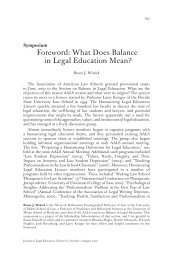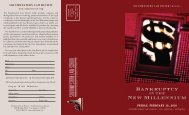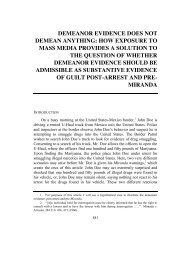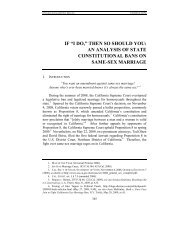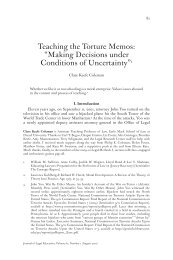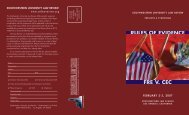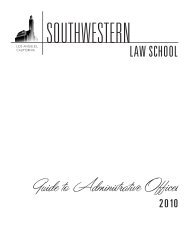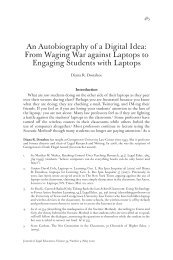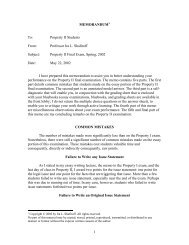What is Art? - Southwestern Law School
What is Art? - Southwestern Law School
What is Art? - Southwestern Law School
- No tags were found...
You also want an ePaper? Increase the reach of your titles
YUMPU automatically turns print PDFs into web optimized ePapers that Google loves.
112 J. INT’L MEDIA &ENTERTAINMENT LAW VOL. 4,NO. 2These <strong>is</strong>sues are important for lawyers, jur<strong>is</strong>ts and art<strong>is</strong>ts—as wellas the wider public—and locate within in an increasingly global artenvironment. We will explore them in five parts:• cultural perspectives• h<strong>is</strong>torical perspectives• trials of modern art• trials of contemporary art• the recent Star Wars case.I. Cultural PerspectivesBefore exploring the h<strong>is</strong>tory of cases where art and art<strong>is</strong>ts havefound themselves before courts of law, let us first consider creativity,art, art<strong>is</strong>ts, art business, and art practice.A. The Creative ActMarcel Duchamp <strong>is</strong> widely recogn<strong>is</strong>ed as one of the most influentialart<strong>is</strong>ts of the 20th century, in the middle of which, he offered a personalview of the creative process: “Millions of art<strong>is</strong>ts create; only a few thousandsare d<strong>is</strong>cussed or accepted by the spectator and many less again areconsecrated by posterity. In the last analys<strong>is</strong>, the art<strong>is</strong>t may shout fromall the rooftops that he <strong>is</strong> a genius: he will have to wait for the verdictof the spectator in order that h<strong>is</strong> declarations take a social value, andthat posterity finally includes him in the primers of <strong>Art</strong> H<strong>is</strong>tory. I knowthat th<strong>is</strong> statement will not meet with the approval of many art<strong>is</strong>ts whorefuse th<strong>is</strong> medium<strong>is</strong>tic role and ins<strong>is</strong>t on the validity of their awarenessin the creative act—yet, <strong>Art</strong> H<strong>is</strong>tory has cons<strong>is</strong>tently decidedupon the virtues of a work of art through considerations completelydivorced from the rationalized explanations of the art<strong>is</strong>t.” 1He goes on to assert: “<strong>Art</strong> may be bad, good or indifferent, butwhatever adjective <strong>is</strong> used we must call it art, and bad art <strong>is</strong> still artin the same way that a bad emotion <strong>is</strong> still an emotion.” 2Furthermore, and central to h<strong>is</strong> thes<strong>is</strong>, he suggests: “The creative acttakes another aspect when the spectator experiences the phenomenonof transmutation: through the change from inert matter into a work ofart, an actual transubstantiation has taken place, and the role of the spectator<strong>is</strong> to determine the weight of the work on the aesthetic scale.” 31. From Marcel Duchamp’s public talk on The Creative Act delivered at the Conventionof the American Federation of <strong>Art</strong>s, Houston, Texas, in April 1957.2. Id.3. Id.




